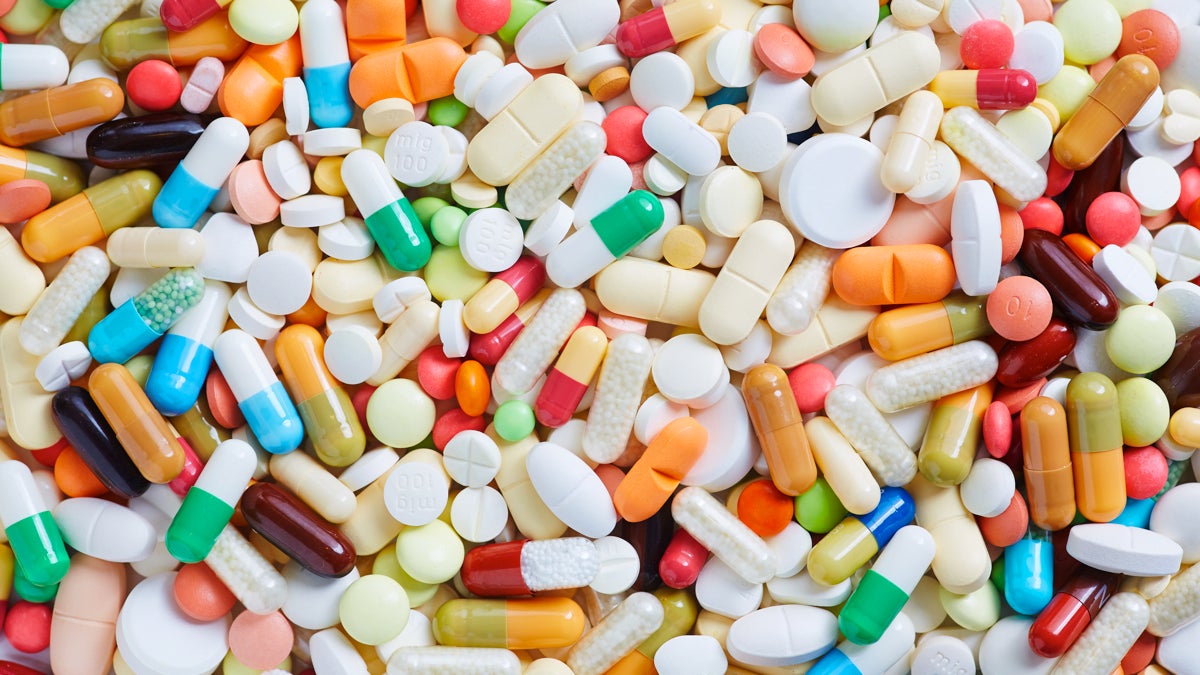EPA proposal to ban flushing ‘hazardous waste’ meds
 Photo via ShutterStock) " title="pills" width="1" height="1"/>
Photo via ShutterStock) " title="pills" width="1" height="1"/>
(Photo via ShutterStock)
The federal Environmental Protection Agency is proposing a new rule that would ban hospitals and pharmacies from sending unused prescription drugs classified as “hazardous waste” down the sink or flushing them down toilets.
Between four and five percent of pharmaceuticals are considered hazardous waste because they contain heavy metals or are corrosive, reactive, flammable or toxic.
A range of drugs, from sedatives to some vitamins, fall into that category. A loophole in EPA rules has allowed these drugs to be flushed or sent down the drain, and eventually enter into waterways, wells, and drinking water supplies in low concentrations.
Pharmaceutical disposal consultant Charlotte Smith cites as an example the drug warfarin, also known by its brand name Coumadin, a common blood thinner.
“It’s also the active ingredient in d-CON rat poison, because it causes hemorrhaging,” said Smith, a pharmacist who works for the pharmaceutical disposal company PharmEcology.
“So it’s a great example of how a drug that is life-saving in the right dose, the right patient and so forth, can be pretty devastating if it were out in the environment and wildlife was able to ingest it without intention.”
There is increasing realization among both healthcare professionals and environmental regulators that many pharmaceutical and personal care products are not removed by typical water treatment systems and remain in the environment long after they are tossed.
Smith said about half of U.S. hospitals have disposal plans for these drugs. Incineration at special hazardous waste facilities is the best method to destroy drugs and keep them out of the environment for good, Smith said.
Back in 2008, the state of Delaware tested water samples from 100 wells for 15 pharmaceutical and personal care products. They found traces of 10 of those products in water samples, including the pain killer acetaminophen.
Ed Hallock, program administrator for the Delaware Division of Public Health’s Office of Drinking Water, said the concentrations were measured by trillions of parts per million, too low to pose a public health concern.
“But if we don’t prevent (these substances from entering waterways) then the levels can only go up, and we want to try to prevent that,” Hallock said. “We don’t know at this point at what level there will be a potential public health effect.”
The regional U.S. Drug Enforcement Agency office is planning its annual drug take-back day with about 300 collection sites in Pennsylvania and Delaware this Saturday, both to prevent drug abuse and keep residents from flushing drugs down the drain at home.
WHYY is your source for fact-based, in-depth journalism and information. As a nonprofit organization, we rely on financial support from readers like you. Please give today.

